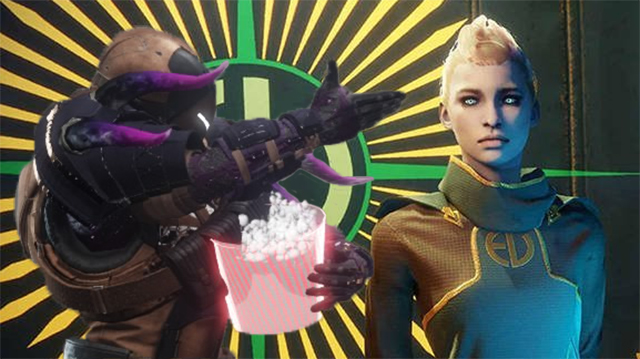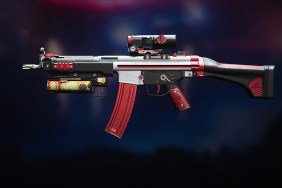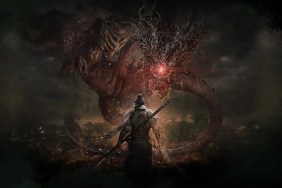Bungie’s split from Activision in early 2019 came as a surprise to many in the games industry, and some of those in the Destiny 2 community were quick to rejoice that the legendary developer was finally “free” to bring the MMO-shooter to its full potential. But that rejoicing soon turned to concern, and players voiced worries about what Destiny 2 would become with a lack of support from one of the biggest games publishers in the business.
From the beginning of its time as an independent studio, Bungie has been rather transparent about how Destiny 2 would change (more relaxed content output, cosmetics moving largely to the game’s Eververse microtransaction store, etc.), but a near-daily deluge of Reddit posts about problems with the Eververse and more shows the community didn’t know just how much Destiny 2’s transition to free-to-play with the launch of the Shadowkeep expansion would change the loot grind. It’s become clear that, while it may not carry the negative reputation of Activision-Blizzard, Bungie is still a corporation out to make money, and that means Destiny 2 has grown more predatory in its third year.
ALSO: Top 20 most anticipated games of 2020
Breaking free
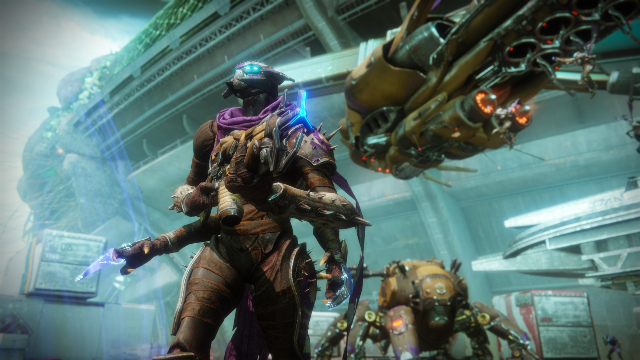
In 2014, four years after it signed a 10-year deal with Bungie to gain distribution rights of the developer’s new IP, Activision announced it planned to spend $500 million helping Bungie develop and promote the original Destiny. How much of this money — or how much more — Activision put into the franchise is unknown, but it appears the publisher wasn’t satisfied with its investment, as Activision was disappointed with Destiny 2: Forsaken’s sales after it launched in September 2018.
Regardless of whether the split with Bungie was motivated by Activision’s disappointment or Bungie’s desire for independence, leaving the publisher meant Bungie lost this financial support (not that it has no outside help, given its $100 million deal with NetEase), as well as development help from Activision-owned studios Vicarious Visions and High Moon Studios.
Following the split, Bungie did express a new sense of freedom to make decisions for Destiny’s future. In a June 2019 livestream, the developer began openly calling Destiny 2 an MMO and announced several big changes, such as a cross-save system and an end to PS4-exclusive content. These changes appeared to be ones Bungie could not make under Activision’s supervision, so it seemed the developer would finally be able to make Destiny 2 the game many hoped it could be. But since the launch of Shadowkeep and of the free-to-play Destiny 2: New Light, fans have been scratching their heads about a number of Bungie’s decisions.
Play your way
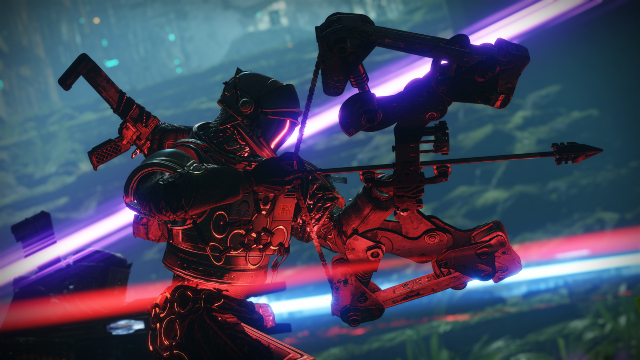
With Destiny 2: Shadowkeep’s Armor 2.0 system, Bungie put a renewed emphasis on “building your character your way,” but the results were mixed. Initially billed as a way to more effectively marry aesthetics with functionality via perk and mod flexibility, Armor 2.0 turned out to be somewhat limited by Elemental Affinity, a system that restricts particular mods to armor pieces that match those mods’ elemental type.
At Shadowkeep’s launch, this also meant you’d be restricted to particular weapon loader perks (like Auto Rifle Loader and Fusion Rifle Loader), limiting your optimal weapon selection. According to Bungie, Elemental Affinity was implemented to accomplish three goals: force players to make creative choices when making builds, make it easier to balance for certain potentially game-breaking mod combinations, and cut down on the amount of information present in any given armor piece’s user interface.
Destiny 2: Season of Dawn added general mods with no Elemental Affinity, such as Light Arms Loader, that affect multiple weapon types in exchange for increased slotting cost. While these general mods allow for additional flexibility, the increased cost could still feel to some like Bungie is, as one Reddit user put it before the new mods were added, “penalizing the player for enjoying certain weapon loadouts that have different affinities.” If a player wants to get the absolute best loadout possible, Elemental Affinities mean they’ll have to combat the following five variables when looking for an armor piece (as pointed out by Reddit user floridagator1995):
- Is that random gear drop an armor piece?
- Is it an armor piece I actually need (ex: helmet vs. gauntlets)?
- Does the armor piece have the right Elemental Affinity for the mods I want to use?
- Does the armor piece have a good stat total?
- Does the armor piece have high values in the stat I want to max out?
The result is lots and lots of grinding, especially given that the Enhancement Prisms and Ascendant Shards used to upgrade armor (allowing players to slot the more expensive general mods regardless of Elemental Affinity) are hard to come by. This is made even worse by the fact that Season of Dawn introduced new seasonal armor mods that only work on certain armor earned during the season, so players looking to use these new mods need to grind for an entirely new set of armor.
Even with the Elemental Affinity grind, however, Armor 2.0 does provide a lot of freedom over the old system, allowing players to swap out perks via mods rather than grinding for armor with the exact perks they want. But the Armor 2.0 system can be seen as predatory because of an all-important sixth variable when grinding for good armor — one that Bungie seemed to acknowledge when introducing the Armor 2.0 system: Does the armor look good? That’s where the Eververse comes in.
Pay-to-tolerate
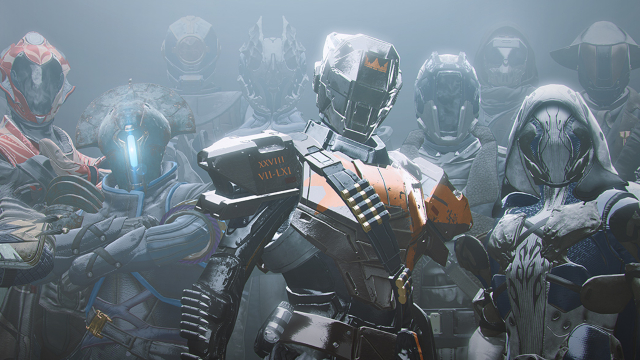
The Armor 2.0 and Elemental Affinity systems make more sense when you examine what Bungie probably wants to get out of it: engagement. Grinding for good armor sets keeps people playing Destiny 2, buying season passes to get access to new loot sources, and encouraging their friends to join. This is true of the old system, too. But in Shadowkeep, being engaged also means — especially on console — spending a lot of cumulative time waiting in loading screens. As of the launch of Armor 2.0, players can conveniently open the Director menu during loading, hop on over to the Eververse store, have a look around, notice the “Items may become unavailable for purchase after the season ends” warning, and think, “Maybe I should grab some of this stuff while I can.”
More possible motivations can be gleaned from other changes to the Eververse store in year three, detailed in a June Bungie blog post:
- Instead of having intentionally bad stats to avoid providing pay-to-win microtransactions, Eververse armor has been converted into universal armor ornaments, which can be applied to any piece of year three (2.0) armor.
- Bright Dust can no longer be earned by dismantling unwanted items received from Eververse engrams. Bright Dust is now earned exclusively through weekly and repeatable bounties. Weekly bounties grant 200 Bright Dust, and repeatable bounties give 10.
- Eververse items can be pulled from Collections without spending Bright Dust.
While the transition to Bright Dust bounties arguably broke the Bright Dust economy, let’s focus on the other changes. Eliminating the Bright Dust cost of Eververse items in Collections is undoubtedly a pro-player move on Bungie’s part, and the sets’ conversion into universal ornaments is entirely positive for players who already owned many or all of the previous seasons’ Eververse armor sets. The crux of how Armor 2.0 and the Eververse are working together to make Destiny 2 predatory, then, is the way the two systems affect players who don’t already have the ornaments.
If you care about how your armor looks and want to avoid buying ornaments, Elemental Affinity may force you to spend just as much time grinding for armor with solid stats and good aesthetics as you would have spent grinding for armor with noteworthy perks in the old system. Getting aesthetically pleasing gear has always taken time, but the combination of Armor 2.0 and universal ornaments brought with it a tempting but costly solution to an old problem: You can finally look good and play exactly how you want to, but only if you spend some cash.
For people with shopping addictions, OCD, or even just those that are more susceptible than most to social pressures and FOMO (fear of missing out), this can be a tempting bargain. The prices themselves, of course, are not a bargain. Purchasing a single universal armor ornament set costs 1,500 Silver, the equivalent of $15, and there’s no option to buy individual pieces from a set (though pieces of certain sets have been sold for Bright Dust on a weekly rotation). Silver can only be bought in packs, meaning you’ll almost always have a little extra — perfect to spend on a new Ghost projection for only 200 Silver.
Besides one set sold for 6,000 Bright Dust during each holiday event, the only other way to get universal ornaments is through season passes. This is actually a great deal, considering season passes are only $10, provide other reward packages, and give access to exclusive seasonal content. The question on many players’ minds is whether or not one great deal is enough.
Cosmetic-only
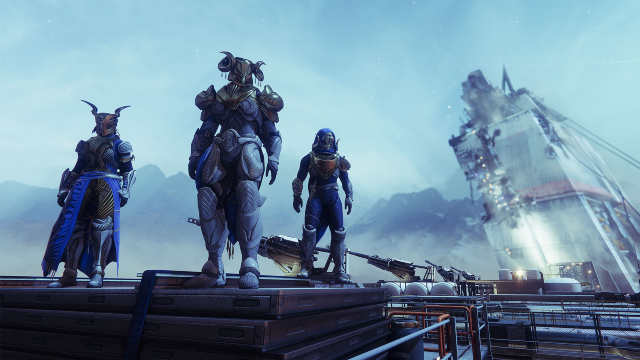
By far the most controversial element of Destiny 2 in year three is the ratio of content that comes with each season compared to that of each season’s Eververse update. When Shadowkeep launched, fans were angry that there was no vendor loot refresh but plenty of brand-new content in the Eververse store. Particularly vexing to fans was an overgrown, Vex-like Sparrow and ship sold in the Eververse. Players criticized Bungie for putting items behind a paywall that, because of their thematic resemblance to raid and Vex Offensive items, should have been earned through gameplay.
Before Season of Dawn arrived, Bungie announced it would make some adjustments to the Eververse system, promising it would tweet out which weekly items will only ever be sold for Silver and increase the proportion of items sold for Bright Dust during the season, as well as saying it was “thinking about the types and themes of content offered through Eververse as well as the role of cosmetic content as a reward for achievement.”
But Season of Dawn is here, and players are still upset with the amount of new items in the store. For example, in a post with 13,500 upvotes following Season of Dawn’s announcement, Reddit user Name_Checks-Out expressed frustration at the news that the Iron Banner, Zavala, and Shaxx would all have old armor sets during season nine, while Eververse would get new items for both the season and its The Dawning and Crimson Days events. Bungie didn’t spring year three’s Eververse changes on players by surprise, however. Back in August, Game Director Luke Smith explained in a “Director’s Cut” blog post that exactly this was going to happen.
“MTX [microtransactions] is a big part of our business being a live game. I’m not going to say ‘MTX funds the studio’ or ‘pays for projects like Shadowkeep’ — it doesn’t wholly fund either of those things,” he said. “But it does help fund ongoing development of Destiny 2, and allows us to fund creative efforts we otherwise couldn’t afford. […] There are some other philosophies here that we haven’t made explicitly clear: We have made deliberate choices related to cosmetic items and not having them come from gameplay.”
Many of those who post angrily about the Eververse say they understand Bungie’s need to make money off microtransactions. Their issue, though, is with the lack of non-Eververse rewards added alongside the new Eververse items. As Reddit user adamconnorlewis said in a recent thread, Eververse feels like the only source of cosmetic gear at the moment, also suggesting cosmetics should drop from activities, quests, missions, Triumphs and not be stuck in the store.
In that same Director’s Cut post, Smith specifically cited the sale of the Whisper of the Worm sniper’s exotic ornaments as paying for the development of the Zero Hour mission and Outbreak Prime quest. It’s not clear if he was saying just that weapon’s two ornaments provided all of the funding to create that mission, but it certainly reads that way.
If that’s the case, it begs the question: What is all of this new Eververse content funding? We’ll never know exactly what portion of Bungie’s revenue comes from Eververse, but it’s safe to say a decent portion of the sales on new items helps fund Destiny 2’s regular seasonal updates. Still, there’s a feeling among the community that the sheer abundance of Eververse content makes it feel like Eververse sales are just funding more Eververse items.
The Engram is the key

So, what’s next? Now that Destiny 2 is a free-to-play game, it’s foolish to assume microtransactions would just be removed entirely. But there has to be a middle path forward. The Destiny community has come up with a few suggestions, including lowering the Eververse items’ prices, giving players more Bright Dust sources (like reviving Bright Dust dismantles or adding it to the season pass), bringing back current-season Eververse Engrams, reintroducing the Prismatic Matrix, and adding Silver to the season pass.
One of the more intriguing suggestions on the subreddit is that Destiny 2 could have separate Eververse reward structures for free-to-play players and players who pay for expansions and season passes. Specifically, zippopwnage suggested free-to-play players could get access to the Eververse as-is, while paying players could get access to Eververse engrams with current-season and event items. This would likely make many paying players feel less “ripped off” by Eververse pricing and Bright Dust availability.
Regardless of the particular solution, what’s clear is that something needs to change — and it probably will. A few months after Destiny 2’s launch, Bungie walked back Eververse’s presence in the game, explaining the rework with language that sounds awfully relevant today. “We recognize that the scales are tipped too far towards Tess at the moment,” Bungie said in a January 2018 blog post, “and Eververse was never intended to be a substitute for end game content and rewards.”
As Reddit user i_still_love_bees pointed out in a recent post, the Destiny 2 community is, for the most part, understanding of Bungie’s need for financial support through the Eververse and for mental health through a lack of content-churning crunch. The current state of Destiny 2’s Eververse microtransactions, whether by deliberate design or not, fits into the rest of its systems in a way that exploits FOMO and other social and mental vulnerabilities to encourage spending. If Bungie wants to show it respects players’ mental health in the same way Destiny’s players should respect developers’, the Eververse needs to be reexamined. It’s almost counterintuitive to say a game got more predatory after Activision departed, but that is sadly where Bungie has found itself with Destiny 2.
